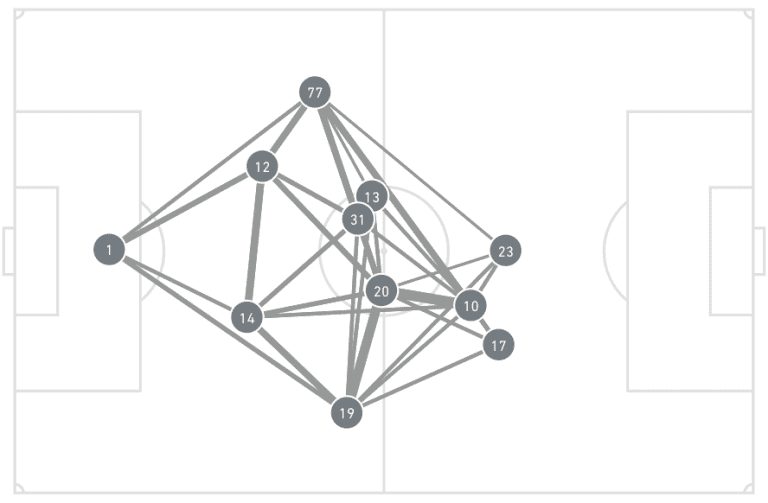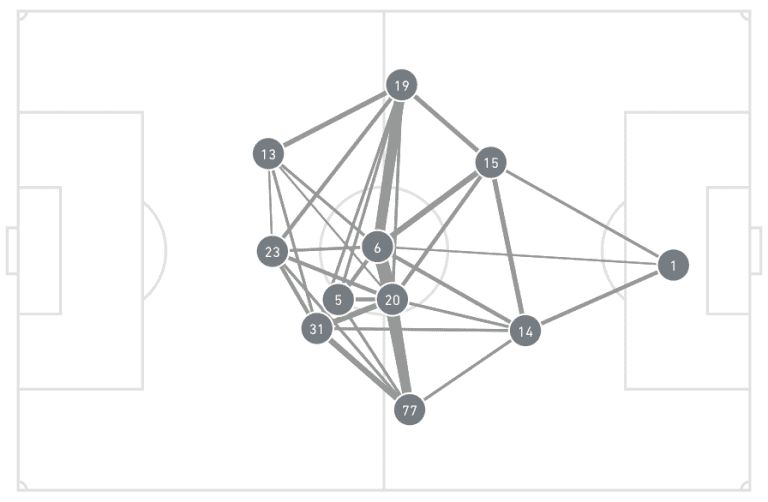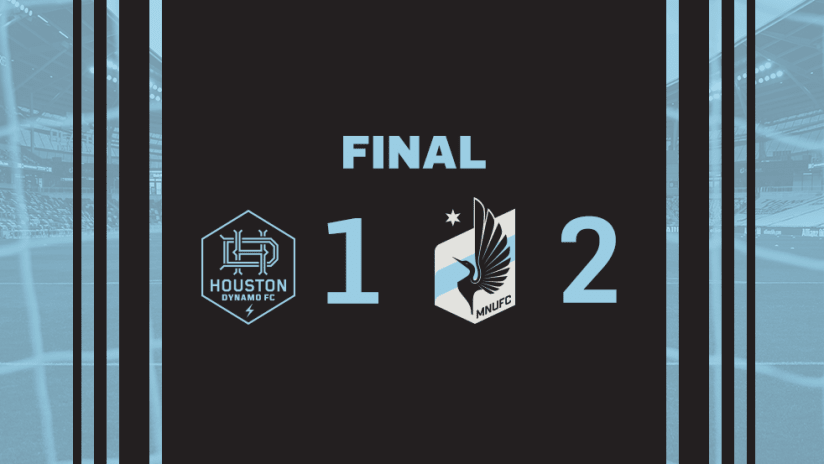It’s hard to overstate just how central midfielder Emanuel Reynoso is to Minnesota United’s attack. Per American Soccer Analysis, he leads the team in touch percentage (the player’s share of the team’s number of touches) at 13.5%. Most of the rest of the players near the top in that stat are defensive players and of those who’ve played at least 1000 minutes, only Hassani Dotson (9.1%) and Robin Lod (7.1%) come close as more attack-oriented players. Close, of course, is relative — Lod has just a little more than half the percentage of touches of Reynoso.
And then there are key passes, or passes that lead to shots of whether the goal is scored. Reynoso’s 63 key passes not only lead the Loons by a considerable margin (Romain Metanire is in second with 20), but it puts him second in the league behind only MVP candidate Carles Gil.
So the major question coming into Saturday night’s matchup with the Houston Dynamo was what would the team do without the straw that stirs their drink, their magliana?
At first, MNUFC struggled to find the game. When Reynoso is in the game, his positioning is the linchpin for the attack. Before he even gets the ball, he makes decision to drop deep or move out wide and these influence where the ball ends up as the holding midfielders look to send it forward. The other players in the attack will often base their movement on his, either overloading the side he’s moving towards or giving him options to switch the pitch. Without that element, the early going saw the connection between the three midfielders and the three attackers in the 4-3-3 looking clunky and stale.
If you look at the passing breakdown from Minnesota’s last game against Houston (a 2-0 win at Allianz Field on August 7), you can see directly how prominent the connections between Wil Trapp (20) and Reynoso (10) or Chase Gasper (77) and Reynoso are (attacking left to right).

Against Houston this past weekend, the connections are much more horizontal, connecting through an axis of Gasper, Trapp, Osvaldo Alonso (6) and Metanire (attacking right to left).

The passing percentages are telling as well. Back on August 7, the Loons completed 78.4% of their passes in the final third. On Saturday night, they only completed 72.2%. Given all of that, it’s not surprising that Minnesota struck first through a set piece, with Trapp stepping into Reynoso’s role and delivering a curling free kick that made its way to Finlay on the far post, who redirected it across goal to a waiting Adrien Hunou to finish.
More interesting for Minnesota’s long-term approach was Hunou’s second goal, which saw him making a secondary run after Metanire’s long throw to the Loons’ newest acquisition, forward Fanendo Adi. The gamewinner came in the 73rd minute, and bringing on Adi had effectively pushed the formation into something more like a 4-4-2. Doing so seemed to unlock something in Hunou, showing that ultimately he might be better suited to that secondary striker role — less the tip of the spear than the dagger in the waistband.
The early miscue that led to Houston’s goal in the first minute aside, the defense remained stalwart and as the attack found its feet, the team looked more and more confident. It certainly didn’t hurt that Houston looked in no hurry to press them, instead mostly defending in a low block and relying on the speed of their attack to take advantage of turnovers in their own final third.
But in the end, the lessons learned from having to play without their main playmaker may be more valuable in the long run than the three points. When Robin Lod joined the team midway through the 2019 season, he was pressed into service on the left side of the attack. He was fine, especially in terms of defending from the front and distributing, but nothing particularly special in attack. Now, with Lod on the right side or as a false 9 and leading the team in scoring and often doing it in high leverage moments, acquiring him looks like a stroke of genius. Hunou has so far struggled in the role of lone striker, but his quality in terms of making secondary runs, shooting from distance and playing off the ball were on clear display against the Dynamo.
The main issue in this case is that there is no second striker in Head Coach Adrian Heath’s favored 4-2-3-1 formation, nor even in his go-to changeup, the 4-3-3. Hunou could play the #10 as a hybrid striker/playmaker in the 4-2-3-1, but then what of Reynoso? Although Reynoso has at times lined up out wide, it’s clear his best position is being free to wreak havoc as he sees fit, and that requires space in the middle. Ultimately, though, putting him in the right place on a starting XI graphic isn’t what’s going to make Hunou live up to his potential. His role and approach have to dovetail in the right way with the players around him, and that will take time and patience. Saturday’s win was just the first step in maximizing him.





